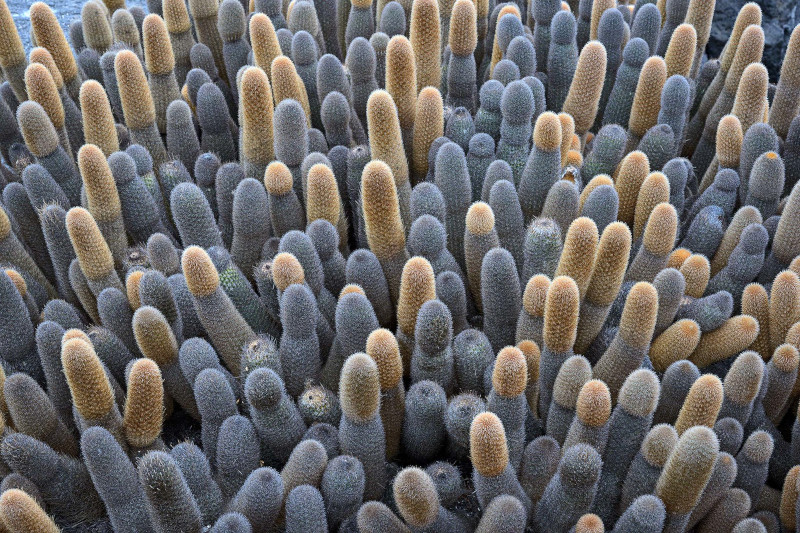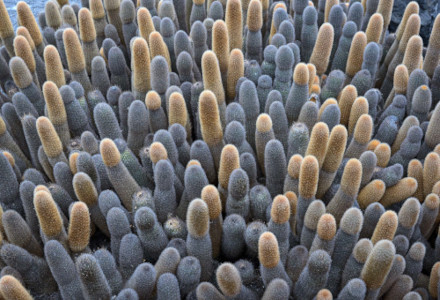
Photographer: Richard Droker
CC License: https://bit.ly/2UzHZ1u
Lava Cactus Facts
- The rather distinctive looking Lava Cactus ranks as the smallest of the cacti species inhabiting its range. Yet its small size does nothing to diminish the fascination scientists have with the species.
- This cactus only grows in the archipelago of the Galapagos Islands. Furthermore, even there its habitat remains widely scattered and broken. It exists in only 11 known small clusters on just six islands.
- The entire combined area of habitation for this species only totals 38.6 sq mi (100 sq km). Due to this limited zone of habitation, the plant remains highly vulnerable to climate change.
- While its range remains limited, at least the location provides some protection from certain perils. That’s because the entirety of the species’ range falls within the territory of the Galapagos National Park. This site also forms a Natural World Heritage Site.
Related Species
Christmas Cactus Old Woman Cactus Dragon Fruit
Photographer: David Stanley
CC License: https://bit.ly/3xrvC6d
Lava Cactus Physical Description
While it has a unique appearance, the Lava Cactus remains the smallest of the cacti species in its range. Each plant consists of a series of stems with a short and cylindrical shape. The stems attain an average height of roughly 24 in (60 cm). These typically grow in rather dense clusters that often exceed 6 ft (2 m) in diameter.
Furthermore, each of the stems has a dense covering of numerous sharp spines. It’s most noteworthy that these spines change color with the age of relative parts of the plant. They present a yellow color on the young portions and turn dark gray or black on older sections.
The blooms also present a striking image, being a beautiful creamy white in color. In addition, they attain diameters of as much as 2.2 in (5.5 cm). The fruits also remain small and may be either red or reddish-brown in color. Each fruit also has a covering of sharp spines and contains many dark brown seeds.
- Kingdom: Plantae
- Phylum: Angiosperms
- Class: Eudicots
- Order: Caryophyllales
- Family: Cactaceae
- Genus: Brachycereus
- Species: B. nesioticus
Lava Cactus Distribution, Habitat, and Ecology
The unusual Lava Cactus has a rather restricted habitat range. They only exist on a total of six of the Galapagos Islands. Also, they only exist in 11 known small clusters that cover a total a remarkably small area.
It remains especially relevant that it has adapted to the extremely volcanic soil of these islands and can thrive nowhere else. The plant grows only on relatively recent lava flows, which severely limits its growth potential on the islands.
Like all succulents, the species stores moisture in its stems when it’s available. This enables it to survive for extremely long periods of time during droughts. The spines, which actually represent the leaves of the plant, serve a dual purpose. They also provide a defense against local herbivores.
The species flowers very briefly before dawn, and the blooms close within a few hours. Despite the intense scientific interest the islands have received over the years, experts know little of the biology of this particular plant.
Species Sharing Its Range
Marine Iguana Pinta Island Tortoise Galapagos Penguin
Check out our other articles on 7 Magnificent Wild Canines, Bald Eagle, Atacama Desert, Rainbow Eucalyptus, Malaysian Flying Fox, Gooty Sapphire Tarantula, Mary River Turtle

